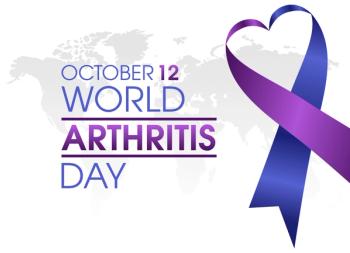
Finerenone's Efficacy Enhanced in Patients With Worsening Heart Failure Events
Finerenone showed consistent cardiovascular benefits across heart failure populations, with enhanced efficacy in patients with worsening events.
Two analyses from the FINEARTS-HF trial examined the efficacy and safety of finerenone, a nonsteroidal mineralocorticoid receptor antagonist (MRA), in patients with
The data was released online as part of the
The analyses highlight finerenone’s potential to provide consistent
The first analysis aimed to examine the effect of finerenone in patients with heart failure, according to left ventricular ejection fraction (LVEF).1
FINEARTS-HF was a randomized, placebo-controlled trial that included a total of 6001 patients with heart failure and LVEF of 40% and greater. Patients were divided into 3 prespecified LVEF categories: less than 50%, 50% to less than 60%, and 60% and greater.
The primary outcome was the total number (first and recurrent) of worsening heart failure events and cardiovascular death.
Baseline LVEF data was available for 5993 patients, with 2172 patients with LVEF less than 50%, 2674 patients with LVEF 50% to less than 60%, and 1147 patients with LVEF 60% and greater. Additionally, patients with a higher LVEF were older, more commonly female, less likely to have a history of coronary artery disease, and more frequently had a history of hypertension and chronic kidney disease compared with those with a lower LVEF.
Finerenone effectively reduced the risk of worsening heart failure and cardiovascular death across all LVEF categories. Specifically, patients with LVEF less than 50% had a rate ratio (RR) of 0.84 (95% CI, 0.68-1.03), those with LVEF between 50% to less than 60% had an RR of 0.80 (95% CI, 0.66-0.97), and patients with LVEF 60% and greater had an RR of 0.94 (95% CI, 0.70-1.25).
When LVEF was analyzed as a continuous variable, there was similarly no significant modification of finerenone's benefit across the range of LVEF (P = .28). Furthermore, finerenone consistently reduced the total number of worsening heart failure events, with a comparable lack of interaction across LVEF categories (P = .26).
The second analyses aimed to examine the efficacy and safety of finerenone in relation to the recency of a worsening heart failure event.2
Patients were categorized based on the time from their last worsening heart failure event to randomization into 4 groups: enrolled during or within 7 days of a worsening heart failure event, enrolled 7 days to 3 months after a worsening heart failure event, enrolled more than 3 months after a worsening heart failure event, and no prior history of worsening heart failure.
The primary outcome was a composite total (first and recurrent) worsening heart failure events and cardiovascular death. The analysis also monitored adverse events, including hyperkalemia and worsening renal function, to evaluate the safety of finerenone in patients with recent worsening heart failure events.
Of the 6001 patients included in the FINEARTS-HF study, 1219 were enrolled during or within 7 days, 2028 enrolled between 7 days and 3 months, and 937 enrolled more than 3 months from a worsening heart failure event. Additionally, 1817 participants had no prior history of worsening heart failure.
The findings revealed that patients with heart failure who experienced a recent worsening heart failure event were at a significantly higher risk for recurrent heart failure events and cardiovascular death compared with those enrolled more than 3 months after a worsening heart failure event or without a prior worsening heart failure history.
Finerenone reduced the risk of the primary composite outcome more effectively in patients enrolled within 7 days (RR, 0.74; 95% CI, 0.57-0.95) and between 7 days and 3 months (RR, 0.79; 95% CI, 0.64-0.97) of a worsening heart failure event, compared with those with no recent worsening heart failure (RR, 0.99; 95% CI, 0.81-1.21).
However, a definitive treatment-by-time interaction was not confirmed (P = .07), but there was a notable trend indicating greater absolute risk reductions with finerenone in patients with recent worsening heart failure (Ptrend = .011).
Importantly, the analysis found that the risk of adverse events, including hyperkalemia and worsening renal function, did not increase among patients assigned to finerenone with recent worsening heart failure.
Collectively, these analyses suggest that finerenone not only offers consistent cardiovascular protection across diverse heart failure populations but may also provide enhanced efficacy in those with recent worsening events.
References
1. Docherty KF, Henderson AD, Jhund PS, et al. Efficacy and safety of finerenone across the ejection fraction spectrum in heart failure with mildly reduced and preserved ejection fraction: A prespecified analysis of the FINEARTS-HF trial. Circulation. September 29, 2024.
2. Desai AS, Vaduganathan M, Claggett BL, et al. Finerenone in patients with a precent worsening heart failure event: The FINEARTS-HF trial. JACC. September 29, 2024.
Newsletter
Stay ahead of policy, cost, and value—subscribe to AJMC for expert insights at the intersection of clinical care and health economics.

















































